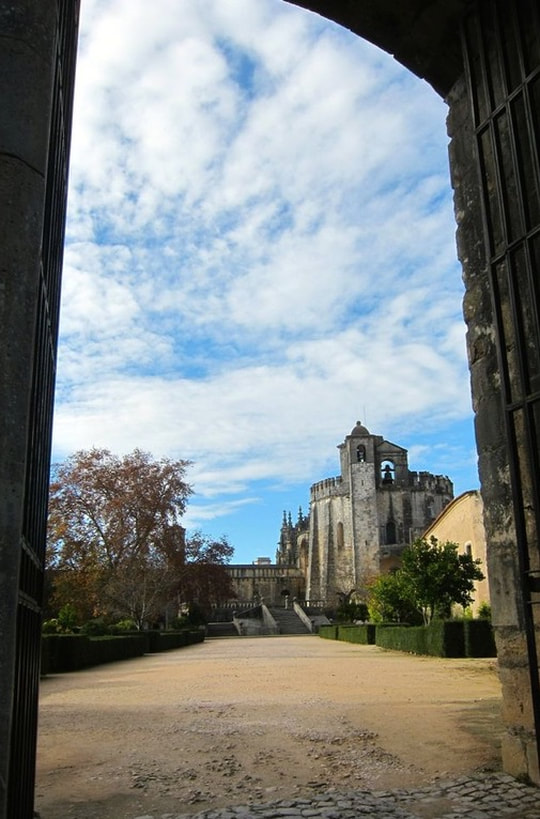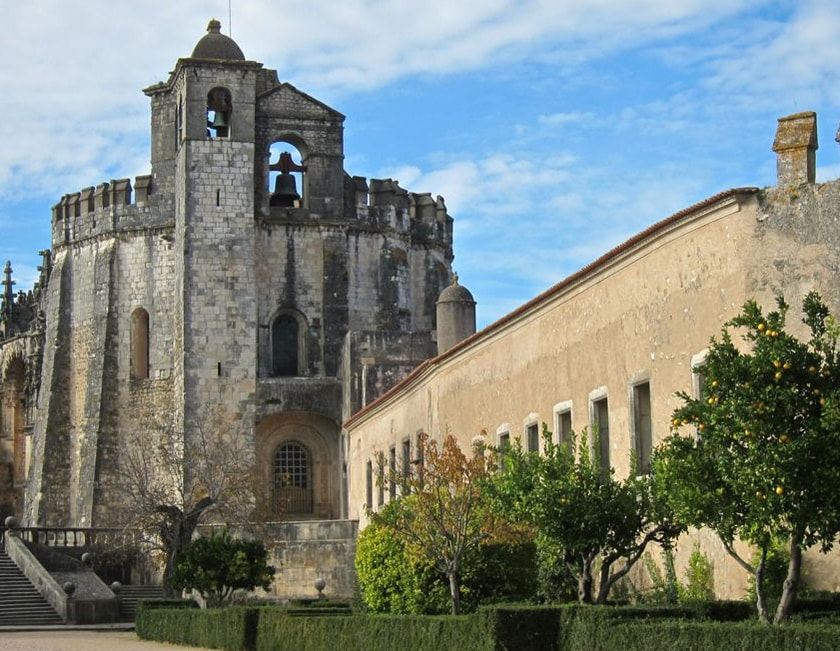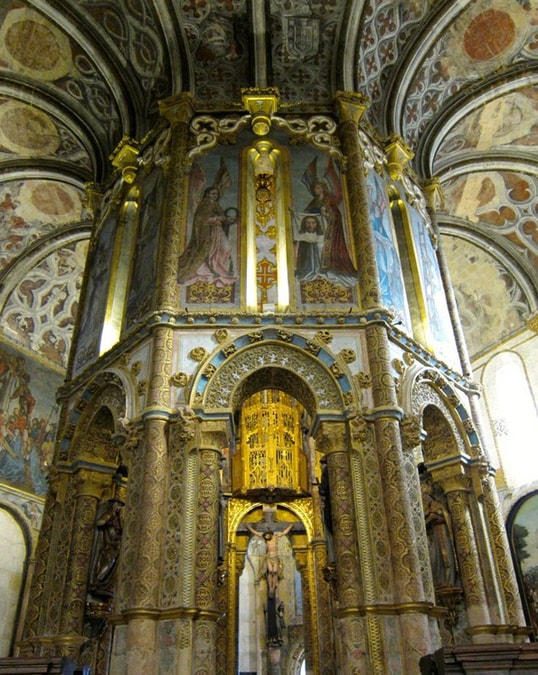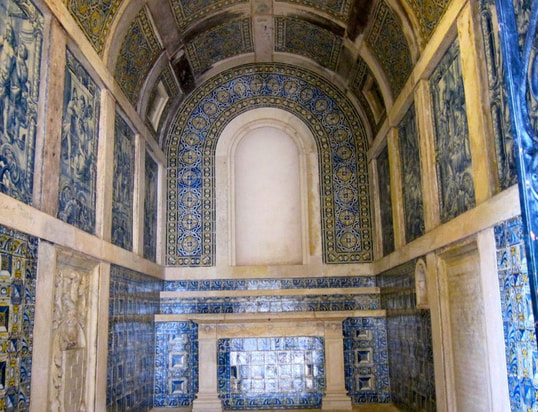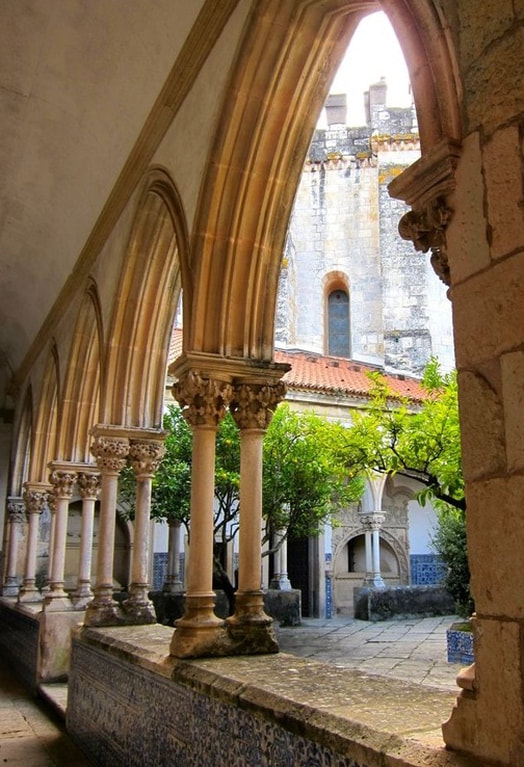Castle of the Templars and the Convento de Cristo in Tomar, Portugal
Portugal and Sicily have a lot in common. One thing is too much history and not enough geography. It seems as if every European satrapy had a run at both of them, stole everything, left little and complained of the fish. Tomar in Portugal is evidence of this.
Castle of the Templars
Called the Castle of the Templars and the Convento de Cristo, the Guardian Newspaper has identified the castle as the most spectacular place to visit in Portugal and who are we to argue?
Called the Castle of the Templars and the Convento de Cristo, the Guardian Newspaper has identified the castle as the most spectacular place to visit in Portugal and who are we to argue?
Who Were the Knights Templar?
The Knights Templar rose to prominence during the Crusades. They started by safely transporting the bullions needed by the army in the field, sort of security guards.
After their success, they became the guardians of huge wealth gained from the Crusades, promoted to bankers. As a religious order, they paid no taxes.
Quickly, they rose to prominence and eventually became the richest and most powerful in Christendom. They answered only to the Pope and are in the innermost circle of the Crusades.
The Knights Templar rose to prominence during the Crusades. They started by safely transporting the bullions needed by the army in the field, sort of security guards.
After their success, they became the guardians of huge wealth gained from the Crusades, promoted to bankers. As a religious order, they paid no taxes.
Quickly, they rose to prominence and eventually became the richest and most powerful in Christendom. They answered only to the Pope and are in the innermost circle of the Crusades.
How the Castle Was Built
The Moors built a castle and mosque there somewhere between the 7th and 9th century and when their time was finished, the land was granted to the Order of the Knights Templar invited in the second half of the 12th century to assist Portugal in the Reconquista.
Immediately began the building of the castle, in 1160, to be the Templars' headquarters in Portugal. Under the leadership of the fourth grand master of the Knights Templars, Gualdim Pais, the construction was in full swing.
The Moors built a castle and mosque there somewhere between the 7th and 9th century and when their time was finished, the land was granted to the Order of the Knights Templar invited in the second half of the 12th century to assist Portugal in the Reconquista.
Immediately began the building of the castle, in 1160, to be the Templars' headquarters in Portugal. Under the leadership of the fourth grand master of the Knights Templars, Gualdim Pais, the construction was in full swing.
Of the 45 hectares belonging to the knights, 5 hectares were developed as a great castle that even Lord Wellington in a later age said was virtually impregnable.
The Knights Templars incorporated not only the beautiful Arabic fountains and courtyards but added a phenomenal religious rotunda, the Charola, decorated from top to bottom in gold leaf and carvings and brilliantly directed sunlight.
From this Castle, the Templars ruled a vast region of central Portugal which they pledged to defend from the Almohad incursion. Under the Knights, Tomar grew as a city but once again, they were not able to stay.
The Knights Templars incorporated not only the beautiful Arabic fountains and courtyards but added a phenomenal religious rotunda, the Charola, decorated from top to bottom in gold leaf and carvings and brilliantly directed sunlight.
From this Castle, the Templars ruled a vast region of central Portugal which they pledged to defend from the Almohad incursion. Under the Knights, Tomar grew as a city but once again, they were not able to stay.
In 1344, the Pope had had enough of the Templars and shut them down and appointed a new master to run things as directed, the friars of the Order of Christ.
More cloisters were built to meet the monastery requirements and the castle became the Convento de Cristo.
More cloisters were built to meet the monastery requirements and the castle became the Convento de Cristo.
In 1514, Henry the Navigator became the Governor of the Order. As the Order's Grand Master, Tomar became an important centre for Portugal's voyage to the seas.
You’ll note the Templars’ cross on the sails of Portuguese ships until the 19th century. To see this, visit the Monument to the Discoveries in Lisbon.
You’ll note the Templars’ cross on the sails of Portuguese ships until the 19th century. To see this, visit the Monument to the Discoveries in Lisbon.
The Charola
Originally the Templars' church, this became the main Chapel for the Order of Christ and in the 16th century, sculptures, paintings and murals were added.
Originally the Templars' church, this became the main Chapel for the Order of Christ and in the 16th century, sculptures, paintings and murals were added.
Map of Bussaco
Restoration of the Castle of the Templars in Tomar
The restoration of the Castle has been extremely well done without in any way betraying the feeling of medieval darkness. Today’s tourist can move easily through the vast complications of what combines the history of religious order, a military fort and a royal castle.
As such, in one spot, you get a crash course in the complexities of Europe from the time of the Romans to the time of the Jewish expulsion from Spain and their arrival in Portugal to build a synagogue that still stands in Tomar.
The restoration of the Castle has been extremely well done without in any way betraying the feeling of medieval darkness. Today’s tourist can move easily through the vast complications of what combines the history of religious order, a military fort and a royal castle.
As such, in one spot, you get a crash course in the complexities of Europe from the time of the Romans to the time of the Jewish expulsion from Spain and their arrival in Portugal to build a synagogue that still stands in Tomar.
The Cemetery Cloister was where the knights and the friars were buried. Built around 1420.
By the way, when you’re there, it is rumoured that Tomar hides the world’s greatest Templar treasure. Keep your eyes open and dig a bit with your toe.
The Templar Castle and the Convent of Christ show the best example of Portuguese architecture, art and culture.
For information:
Convento de Cristo
2300 Tomar - Portugal
www. conventocristo.pt
For information:
Convento de Cristo
2300 Tomar - Portugal
www. conventocristo.pt
Portugal has so many jewels like Tomar and they are all worth a visit. Here are some:
